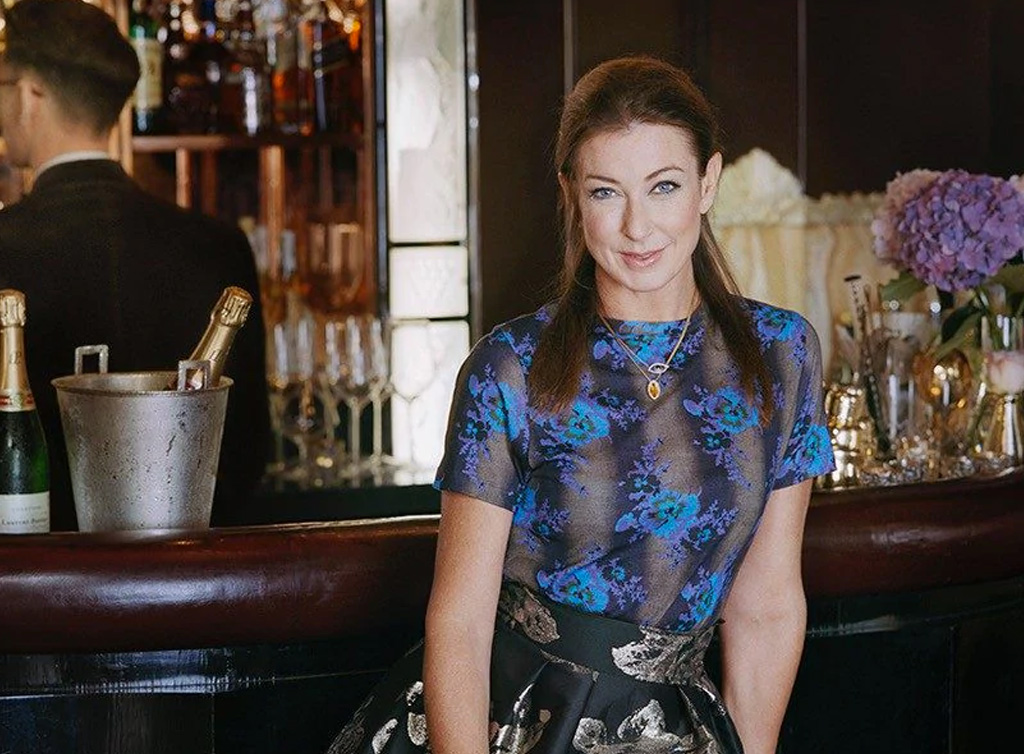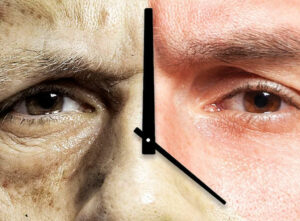Banjaxed by a recent hangover, Sharon Walker takes professional advice on how to enjoy herself without the excruciating morning-after
On the whole my drinking isn’t the problem. I don’t wake up in A&E missing a shoe, wondering how I got there. No the drinking isn’t the problem, the drinking is fun, almost essential, I’d say, for a good party, the problem is the hangovers, which have become so excruciating in my fifties, the drinking hardly seems worth it. After my last big night out on Bonfire Night, I couldn’t get out of bed for three weeks (I exaggerate only slightly).
We all have our own unique relationship with alcohol, but I don’t think I’m alone in drinking too much at parties. Twenty four per cent of adults in England and Scotland regularly drink over the Chief Medical Officer’s low-risk guidelines, according to a 2016 government report, and 27 per cent of drinkers in Great Britain binge drink on their heaviest drinking days (over 8 units for men and over 6 units for women).
I don’t want to be one of those midlife women who drink more than their grown-up kids and with the party season about to enter into full swing, I need help. To this end I’ve enlisted a drink coach, to call me to task and help me stay motivated. Stephen Williams is one of the coaches on the brilliant DrinkCoach website, an alcohol specialist with seven years of experience and a degree in drugs and alcohol counselling, he quickly puts me at ease as we chat on the phone.
He describes the drink coach’s role thus: “Think of me as a personal trainer to report back to you or your wingman at parties.” Except the unsuitable suitors he’ll be batting away will be celebratory cocktails and glasses of fizz.
At first, I’m a little shy about admitting I’m not even trying to give up alcohol, but Stephen drinks himself and is not remotely judgemental. He wants to know what moderate drinking means to me. It’s a good question. What does moderate mean? Two drinks? Three? The large 250 ml buckets of wine I’m partial to at my local are nearly 3 units, apparently. So just two of those is classifies as binge drinking,according to the World Health Organisation. Gulp.
I’ve been deluding myself into thinking my tipple of choice is the healthier option. One bottle of wine delivers the same carcinogenic impact as ten cigarettes (if you’re a woman). Five if you’re a man.
“There’s this misconception about wine and the idea that Prosecco is somehow innocent, but 80 ml of wine is a unit of alcohol and that’s just two gulps for most people.” He thinks shorts might be a better party drink for me. “People are afraid of spirits, but you’ll be drinking less alcohol if you have a GT, as long as you stick to singles and make it a long drink.” (A single G&T is one unit, a small 125ml glass of wine is 1.5 units).
We talk about my triggers for drinking that bit too much and explore my ‘tipping point’, the point at which the wheels come off and my resolve crumbles. For me this could be anywhere between three and five drinks. This is pretty standard, most women will start to lose track after 3-4 units drunk within 3-4 hours. For men it’s usually 4-5 units. He suggests treating the next party as a kind of observational experiment, to figure out my tipping point. “Observe when and why and how much you drink.”
Since I often drink more when I’m with friends who drink a lot, Stephen thinks I need to work on my “drink refusal skills”, which basically means telling white lies: “I’ve got a meeting first thing and can’t smell of booze/I’m on antibiotics/I’m driving.” With close friends he suggests honesty, “Be direct. Look them in the eye. Be assertive but not aggressive.” We also discuss my setting a drink curfew, a point at which I’ll stop, say 11pm.
This is all very well, I say, but what if I quite enjoy freewheeling past my tipping point? Faced with a heavenly cocktail (or three), how will I summon the willpower to say no? On this point he suggests doing what he calls “an importance and confidence ruler”, which means scoring out of ten how important it is for me to stick to my goal (it’s a nine). And then looking at ways I can build my ability to stick with it. To this end I decide I’ll gen up on the ruinous effects of alcohol is having on my health (the booze might seem fun but the fatty liver disease certainly won’t be). And I’ll keep track of my units, which sounds obvious but I rarely do it.
Unfortunately, Stephen isn’t available to attend parties with me, but he will be there in spirit, like a guardian angel on my shoulder, encouraging me to rein it in. “Ask for ice in your drink. Every time the ice hits your teeth, that’s me reminding you to slow down,” he says, before we part company.
My new moderate drinking skills are first put to the test at a soirée at the portrait artist Jonathan Yeo’s studio, which has been sponsored by a gin company. In the corner of the room there’s a bronze sculpture of Yeo’s head which started life as a virtual self-portrait and the walls are lined with Yeo’s portraits of famous people, including a collage of Silvio Berlusconi made of cut-up porn magazines.
The room is buzzing with elegantly dressed millennials and the only person I know is Jonny. It’s a classic ‘high risk’ situation. The gin is flowing freely and I feel sure Stephen would not approve of the bucket-sized crystal tumbler – large glasses can make you drink 10 per cent more – I’m clutching, which is filled with a good slosh of gin and a pretty swirl of (edible) blue paint. It’s one of those instantly elevating cocktails, the kind of drink that can make you forget yourself for a moment and bond deeply with strangers. There’s probably a good two units in there, I think, now that I’m paying attention to these things.
Standing around chatting, glass in hand, is not good for me and not good for the gin, which is slipping down nicely. Stephen has told me the reason most bars remove the tables is to make punters drink faster. So I sit down and put the glass on the floor, instead of keeping it in my hand, and try not to kick it. It’s probably a bit annoying for the man sitting next to me as I keep bobbing up and down to retrieve my glass, but it does slow me down and I eek it out over forty minutes. (Forty minutes! Before it would have been gone in three gulps). Stephen has encouraged me to try to make each drink last an hour (yes, an HOUR) and to refuse tops ups, as it’s harder to keep track. “Finish one glass before you start the next.”
There’s a Q&A, then we get to snoop around behind the scenes in the studio. I’ve switched to water (clever me), but I allow myself one more drink before leaving. I’m mindfully taking tiny sips, focusing on the flavours. It’s hard to let go but I put my drink down on the bar, and become engrossed in a conversation with a curator. When I turn around my glass has been cleared away. For a moment I feel a terrible sense of loss. I hadn’t finished! I’m about to ask for another one. But then a little voice in my head pulls me up sharp: ‘Hold on. Do you want that drink enough to risk a hangover?’ I do not and I don’t need Dutch Courage, I’m having a perfectly nice time without it. On my way home in the Uber I log my units on DrinkCoach app, which I estimate at four, it’s hard to know with cocktails, I was certainly teetering on the edge of my tipping point. I make a note to ask the barman next time. Simply keeping tack will help me drink less.
The next testing scenario promises to be a little more challenging. It’s a big, glamorous, Friday night party, hosted by a couple of friends who love dressing up. The party’s theme is The Beautiful and The Damned, which sounds dangerous. I’ve decided to set a target of three drinks or three units. But one of my girlfriends is coming to my house before the party and traditionally (and generously) brings a bottle of fizz with her. The pre-party drink, or ‘prinks’, is a red flag. If I prink I’m going to get smashed. “A study found that those who pre-drank were more likely to suffer blackouts, hangovers,” Stephen has informed me.
So I simply text to say: “You know that lovely bubbly you usually bring, I won’t be able to drink it with you, as I’m trying to cut back.” Is she offended? Not a bit, she is trying to cut back herself.
At the party, which is in a cavernous nightclub on the Thames, everyone is dressed in costume. A woman wearing a flat cap and monocle walks past, then another dressed as twenties It girl Clara Bow in a shimmering, floor-length gown. My friend looks just like the flapper icon Louise Brooks in a black bob wig and red beaded dress.
“I don’t know about you, but I could do with a drink,” says one of my friends. Stephen, has warned me against getting involved in buying rounds, as I’ll feel a pressure to keep up. “Just buy your own drink.” Surely that’s a bit Scrooge-like? “When it’s your turn buy yourself a soft drink.” I ask for a gin and tonic, insisting on a single, while everyone else orders doubles. Then we head upstairs to a room decorated like a French boudoir. My friend picks up a feather duster from a dressing table. “Oh let me clean away your sins,” she says fluttering it over us.
I’ve put my drink on the dressing table. Out of reach, but not out of mind. I’ve noticed I’m obsessively checking my phone, to see if it’s time for my next drink yet. I’m hardly in the moment, but on the upside there’s plenty of good people watching.
When it’s my round, I order a sparkling water with ice for me and proper drinks for everyone else, which makes me feel virtuous but irritated. At least it will keep me hydrated and awake. A man in a top hat wanders over to admire my rose headband. “Where did you even come from?” he purrs. Obviously drunk.
On the dance floor, my friend David asks if I would like a drink. I tell him I’m not drinking, much. He looks horrified. “What here? So you’ve got two more drinks left for how many hours?”
But despite the fact that I’m still pretty sober, it’s still fun dancing and flirting and chatting. I don’t leave until 3am and I keep to my target of three G&Ts. Single G&Ts are the way forward. In the morning I feel completely fine. No screaming headache, no party remorse, no worries about my liver.
The next drinking challenge involves a night out with a close friend. She likes a drink and it’s her birthday, plus she’s just found out her husband has been having an affair. Won’t I seem a bit heartless if I tell her I’m not drinking? I ask Stephen. “You can tell her you have an important meeting.” I don’t think she’ll buy it, I say. “Then just be honest. Tell how you felt last time you overdid it. She probably won’t notice you’re drinking less.”
We meet in one of our favourite bars. It’s a Monday night, but since I’m freelance and her tolerance is “through the roof” as she tells me sipping her martini, this is hardly an impediment. My friend wants to know what I’ve learnt from my drink coach. I explain I’ve learnt not to drink past my tipping point, which is the point when you get pissed. “It sounds boring,” she says. “I like to think I’ve elevated drinking to an art form. I take great pleasure in knowing about wine and mixing theperfect cocktail.” She shows me a photo of the ‘perfect’ dirty martini she mixed for herself the day she found out about the affair. It’s sitting on her son’s guitar, twinkling in the sunlight. It does look beautiful, the perfect delicious dirty martini for a broken heart.
“Oh my God, for all my talk of tolerance. I’m smashed,” she says and we’ve only had one drink. When she goes to the loo I ask the waitress what size my Champagne measure is. It’s 175ml, that’s nearly two units. My friend’s martini contained two doubles (4 units!). I’ll never drink a martini again, I think wistfully, but I’ve become a different kind of drinks nerd. One who counts alcohol units like I used to count calories. Somehow I don’t think there’s a way back.




